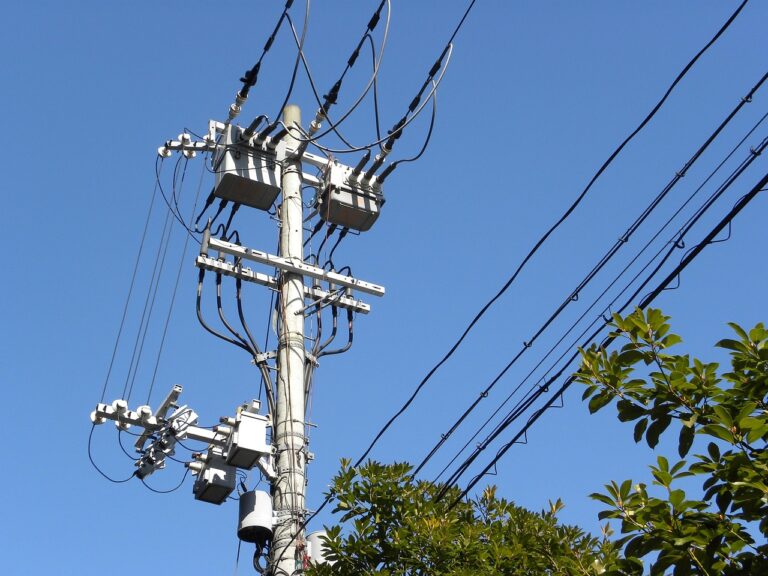What is Sustainable Energy and What are Clean Energy Sources?
Sustainable energy and renewable energy are two crucial concepts that allow us to meet our energy needs in an environmentally...
Devamını Oku

A voltage transformer is a specialized type of instrument transformer designed to safely reduce high voltage levels to standardized, lower levels suitable for metering and protection systems. In high-voltage transmission networks, direct measurement of voltage is not only impractical but also hazardous. Voltage transformers enable safe and accurate readings by converting thousands of volts into values that standard meters and protection relays can handle. These devices are essential in power distribution networks, substations, and industrial facilities where continuous monitoring and control are crucial.
The question of what is voltage transformer what does it do goes beyond a simple technical definition. These transformers play a critical role in ensuring electrical safety, maintaining system balance, and enabling early fault detection. In addition to improving operational efficiency, they also protect sensitive equipment and personnel from high-voltage exposure.
A voltage transformer is an electrical device used to step down high voltages in power systems to lower, manageable levels for instruments and protection equipment. These transformers are connected to high-voltage lines on the primary side and deliver a proportional but reduced voltage on the secondary side. This allows for safe and accurate measurements without exposing equipment or personnel to dangerous voltage levels. Voltage transformers are typically used in conjunction with measuring devices, protective relays, and energy monitoring systems.
Understanding what is voltage transformer also involves recognizing its importance in maintaining system reliability. By converting high voltages to standard values, voltage transformers ensure that readings from monitoring instruments are consistent and precise. They also play a role in the insulation of control and protection systems from the high-voltage network.
The voltage transformer ratio refers to the proportional relationship between the primary (input) voltage and the secondary (output) voltage of the transformer. For example, a 20,000V/100V transformer has a ratio of 200:1. This ratio ensures accurate voltage scaling, allowing measuring instruments to safely interpret high voltages through low, standardized values.
A voltage transformer plays a critical role in power systems by making high-voltage levels measurable and safe. It steps down the voltage from dangerous levels to values that can be handled by standard measuring instruments and protective devices. This function is essential in environments like substations, power plants, and industrial networks, where monitoring and control depend on precise and safe voltage readings. Without voltage transformers, electrical measurement and protection at high voltages would be both unsafe and unreliable.
When asking what does voltage transformer do, the answer extends beyond voltage conversion. These transformers also provide galvanic isolation between high-voltage power lines and sensitive control systems, enhancing operational safety. They ensure reliable operation of monitoring devices and protection relays by supplying consistent and accurate voltage signals.
A voltage transformer is designed with precision and safety in mind. One of its main characteristics is high insulation capability, which ensures that the primary and secondary windings are effectively separated, reducing the risk of electrical hazards. Voltage transformers operate within specific accuracy classes, enabling reliable performance even under varying load conditions. They also offer stable output regardless of input fluctuations, which is crucial for maintaining consistent monitoring and protection in electrical systems.
Other notable features of a voltage transformer include compact design, thermal endurance, and resistance to short circuits. These transformers can be used in both indoor and outdoor environments, with weatherproof enclosures available for harsh conditions..
Choosing the right voltage transformer involves understanding the specific requirements of your electrical system. The first step is to identify the nominal voltage and frequency of the network in which the transformer will be used. The voltage class and insulation level should align with the system’s operating conditions. Accurate voltage transformer selection ensures that the device delivers precise readings while withstanding electrical and thermal stresses. It’s also crucial to consider the transformer’s intended function—whether for metering, protection, or both—as this affects the accuracy class and burden rating required.
Environmental conditions play an important role in voltage transformer selection as well. Will the transformer be installed outdoors or inside a control panel? Factors such as humidity, dust, and temperature fluctuations may require special enclosures or insulation materials. In addition, compliance with industry standards, ease of installation, and maintenance accessibility should be taken into account. Adatech provides expert guidance and customized solutions, ensuring that clients receive transformers that are reliable, efficient, and tailored to their operational needs.
Proper installation and operation are critical when using a voltage transformer. Before making any connections, it’s essential to de-energize the system and ensure all safety precautions are in place. The secondary terminals of the transformer must always be grounded to prevent hazardous voltage buildup. Connection points should be tight and free of corrosion to maintain accuracy and reduce the risk of overheating. Improper grounding or loose wiring can compromise system reliability and pose serious safety risks.
In addition, routine maintenance and testing are necessary to ensure the continued accuracy and integrity of the voltage transformer. Over time, insulation materials may degrade or moisture may enter the housing, especially in outdoor installations. Regular inspections can help detect such issues before they lead to failures. It’s also vital to follow manufacturer guidelines for load limits and environmental ratings.

Sustainable energy and renewable energy are two crucial concepts that allow us to meet our energy needs in an environmentally...
Devamını Oku
Efficient and secure energy transmission is only possible through the correct choice of a pole type transformer, which plays a...
Devamını Oku
Industrial automation refers to the use of control systems, such as computers or robots, and advanced technologies to manage different...
Devamını OkuPROTECTION OF PERSONAL DATA
WEBSITE COOKIE POLICY
Your personal data; It is one of the leading principles of our Organization to protect the privacy of visitors to the website (www.adatech.com.tr) operated by ADATECH as the data controller. This Cookie Usage Policy (“Policy”) explains to all our website visitors and users which types of cookies are used and under what conditions.
Cookies are small text files stored on your device or network server by websites you visit on your computer or mobile device.
They are generally used to provide you with a personalized experience during your use of the website you visit, to improve the services offered and to improve your experience, and may contribute to ease of use while browsing a website. If you do not prefer the use of Cookies, you can delete or block Cookies in your browser settings. However, we would like to remind you that this may affect your use of our website. Unless you change your cookie settings in your browser, we will assume that you accept the use of cookies on this website.
1. WHAT KIND OF DATA IS PROCESSED IN COOKIES?
Cookies on websites, depending on their type, collect data about your browsing and usage preferences on the device you visit the site. This data includes information about the pages you access, the services and products you review, your preferred language option and other preferences.
2. WHAT is a solution and what are its intended uses?
Cookies are small text files that are stored on your device or network server through browsers by websites you visit. These small text files, which contain your preferred language and other settings on the site, help us remember your preferences the next time you visit the site and make improvements to our services to improve your experience on the site. Thus, you can have a better and personalized usage experience on your next visit.
The main purposes of using cookies on our Website are listed below:
3.TYPES OF COOKIES USED ON OUR WEBSITE
3.1. Oturum Çerezleri
Session cookies ensure that the website functions properly during your visit. They are used for purposes such as ensuring the security and continuity of our sites and you during your visit. Session cookies are temporary cookies, they are deleted when you close your browser and come to our site again, they are not permanent.
3.2. Persistent Cookies
These types of cookies are used to remember your preferences and are stored on your device via browsers. Persistent cookies remain stored even after you close your browser or restart your computer from which you visited our site. These cookies are kept in subfolders of your browser until they are deleted through your browser’s settings.
Some types of persistent cookies may be used to provide you with special suggestions, taking into account issues such as your purpose of using the Website.
Thanks to persistent cookies, if you visit our Website again with the same device, it is checked whether there is a cookie created by our Website on your device and if there is, it is understood that you have visited the site before and the content to be transmitted to you is determined accordingly and thus a better service is provided to you.
3.3. Mandatory/Technical Cookies
These cookies are essential for the website you visit to function properly. The purpose of such cookies is to provide necessary services by enabling the website to function. For example, it allows you to access secure parts of the website, to use its features, to navigate on it.
3.4. Analytical Cookies
They collect information about the way the website is used, the frequency and number of visits, and show how visitors navigate to the site. The purpose of using such cookies is to increase performance by improving the way the site functions and to determine the general trend direction. They do not contain data that could enable the identification of visitors. For example, they show the number of error messages displayed or the most visited pages.
3.5. Functional/Functional Cookies
It saves the choices made by the visitor within the site and remembers them on the next visit. The purpose of such cookies is to provide ease of use to visitors. For example, it prevents the site user from re-entering the user password on each page they visit.
3.6. Targeting/Advertising Cookies
They enable the measurement of the effectiveness of advertisements served to visitors and the calculation of the number of times the advertisements are viewed. The purpose of such cookies is to serve ads customized to the interests of visitors.
Likewise, they enable the detection of visitors’ interests specific to their browsing and the presentation of appropriate content. For example, it prevents the advertisement shown to the visitor from being shown again in a short time.
4. HOW TO MANAGE COOKIE PREFERENCES?
To change your preferences regarding the use of cookies or to block or delete cookies, simply change your browser settings.
Many browsers give you the option to accept or reject cookies, accept only certain types of cookies, or be alerted by the browser when a website requests to store cookies on your device so that you can control cookies.
It is also possible to delete cookies previously saved in your browser.
If you disable or refuse cookies, you may need to set some preferences manually, some features and services on the website may not function properly as we will not be able to recognize and associate your account. You can change the settings of your browser by clicking on the relevant link from the table below.
5. ENFORCEMENT OF WEBSITE PRIVACY POLICY
Website Privacy Policy …./…./…./…. . is dated. In case all or certain articles of the Policy are renewed, the effective date of the Policy will be updated. The Privacy Policy is published on the website of the Authority (www.adatech.com.tr) and made available to the relevant persons upon the request of the personal data owners.
ADATECH
Address: Esenyalı Neighborhood Yanyol Street Varyap Plaza No:61-148 Pendik / Istanbul
Telephone: +90 (216 ) 514 80 69
E-mail: [email protected]
Web Address: www.adatech.com.tr